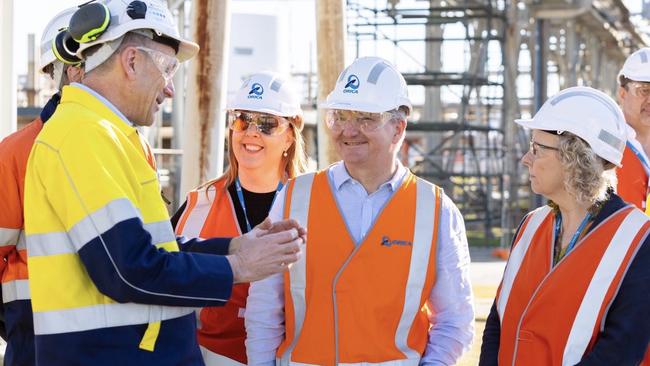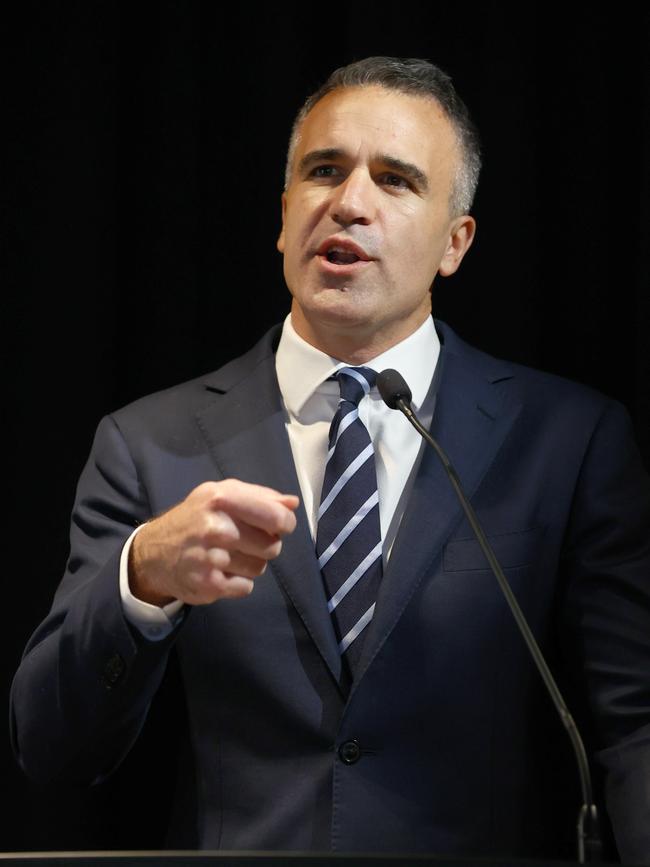Why it’s time to cut our losses on green hydrogen fantasy


With the assistance of government subsidies to get the ball rolling, green hydrogen was going to be a large part of our energy future. Very soon we would be exporting green hydrogen as well as producing green steel, green alumina and manufacturing ammonia. The sky was the limit.
For the sceptics among us, the dream always looked like a fairytale that ignored the hard reality of physics, engineering and economics. Hydrogen might be the first element in the Periodic Table, but as an element that could power industry – indeed, the economy – it always looked like a nirvana, certainly in the next several decades. Let’s not forget small-molecule hydrogen can easily leak, can ignite and cause embrittlement of pipes.
The announcement last week that Origin Energy would not be proceeding with its green hydrogen project in the Hunter Valley came as no surprise, apart from the timing. Origin Energy chief executive Frank Calabria is to be commended for pulling the pin when he did, thereby saving taxpayers, as well as shareholders, a whole lot of wasted cash.
According to Calabria: “It has become clear that the hydrogen market is developing more slowly than anticipated, and there remain risks and both input cost and technology advancements to overcome. The combination of these factors mean we are unable to see a current pathway to take a final investment decision on the project.”
In a nutshell, there was little customer interest, the costs are too high and it’s not clear whether the technology will work. That pretty much sums up where green hydrogen has landed around the world, although our high energy costs and distance from markets puts us at an added disadvantage.
It was not always so, with then chief scientist Alan Finkel writing a whole report in 2019 about the potential upside of green hydrogen. He predicted that green hydrogen would be generating exports worth $9bn by the end of this decade.
He saw a role for green hydrogen in generating electricity, even though electricity is required to produce green hydrogen in the first place. The loss ratio (energy in, energy out) is close to 0.3. This never made any sense, although the point was made that hydrogen could be stored, unlike intermittent renewable energy.
The proposition that green hydrogen can economically be exported has also been debunked given the technical difficulties and extremely high costs of transportation. In any case, there aren’t any customers at scale at this stage, notwithstanding the signing of various non-binding memorandums by overseas parties. Unless hydrogen can be produced at around $2 per kilogram – and we are nowhere near that figure – green hydrogen is not a going proposition. Transport and processing costs are on top of that.
The allure of hydrogen has in fact been around for a while. In 2003, US president George W. Bush announced the Hydrogen Fuel Initiative “to accelerate the research and development of hydrogen, fuel cell and infrastructure technologies that would enable hydrogen fuel cell vehicles to reach the commercial market in the 2020 time frame. The widespread use of hydrogen can reduce our dependence on imported oil and benefit the environment by reducing greenhouse gas emissions”.

In the end, very little came of the initiative although many billions of dollars were spent on this non-achievement.
The European Union has more recently become very enthusiastic about green hydrogen, establishing a target of 6 gigawatts of renewable hydrogen electrolysers producing one million tonnes of green hydrogen by this year. Last year, a mere 0.1 tonnes of hydrogen was produced in the EU, with 324 megawatts of electrolysers in place. A budget of close to €19bn ($30.6bn) has been allocated to subsidising hydrogen, although this expenditure has been heavily criticised by the European Court of Auditors. Only Germany has a formal commitment to produce and use more hydrogen. The EU has also moved away from requiring green hydrogen, opting instead for low carbon hydrogen, which includes nuclear and gas with carbon capture as well as renewable energy.
What then is the realistic future for green hydrogen in Australia? While Origin and effectively Fortescue are now out of the game, there are still some government-sponsored projects on the go, though their fate remains highly uncertain.
The Malinauskas government in South Australia has allocated around $600m to create a green hydrogen hub in Whyalla to support the Whyalla Steelworks to convert to the use of an electric arc, thereby displacing the use of coal. To say this is a work in progress is to be kind. It’s not even clear that steel mill will survive the next few years.
There remains the challenge of getting the temperature at the plant to the required level for using hydrogen. There is also the close to insurmountable difficulty of securing enough renewable energy to produce the hydrogen in the first place.
The World Steel Association estimates that to replace coking coal with green hydrogen would require an electricity system with a capacity more than the current capacity of the entire EU. This simply cannot be done quickly, if at all.

A similar dilemma exists for the green hydrogen plans in the Gladstone area. To meet the aspiration of four million tonnes of green hydrogen per year, there would be a requirement for 110 million gigawatts of additional renewable energy, which is close to two times the existing capacity of the entire east coast grid. In turn, this will involve some 10,000 wind turbines and 2500 square kilometres of solar panels. In other words, it’s not going to happen.
Of course, the electrolysis process requires water – some 4500 megalitres per year. At this stage, water is being pumped to the Gladstone pilot installations using diesel. There is a certain irony there.
The green hydrogen dream is quickly turning into a busted flush as more private sector companies decline to participate. It always sounded too good to be true, although those who understood the fundamentals saw through the fantasy. The shift in thinking to low-carbon hydrogen also undercuts most of the rhetoric of Chris Bowen, the federal Climate Change and Energy Minister.
There is a possibility that nuclear-generated hydrogen may take off in the US as a relatively cheap means of producing the element. Bear in mind that hydrogen is a critical component in fertilisers, explosives, ammonia and several other applications, so there will always be some demand.
Rather than waste more billions of dollars of taxpayer funds on trying to promote green hydrogen, the preferred policy should be for both the federal and state governments to cancel their subsidy arrangements. It is also time for the Coalition to reconsider its position on green hydrogen. The Morrison government had supported its development; it is now time for a change of mind.
More Coverage
 For the sceptics among us, the dream always looked like a fairytale that ignored the hard reality of physics, engineering and economics
For the sceptics among us, the dream always looked like a fairytale that ignored the hard reality of physics, engineering and economics





It was meant to be the last piece of the net-zero jigsaw – green hydrogen. The renewable energy plus batteries pieces were (sort of) in place. Green hydrogen, using electrolysis powered by renewable energy, would be the means whereby hard-to-decarbonise sectors could achieve net-zero emissions. It would also enable Australia to become a renewable energy superpower by virtue of our advantages in wind, sun and land.